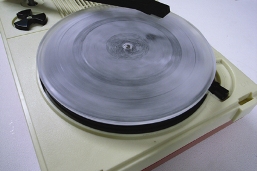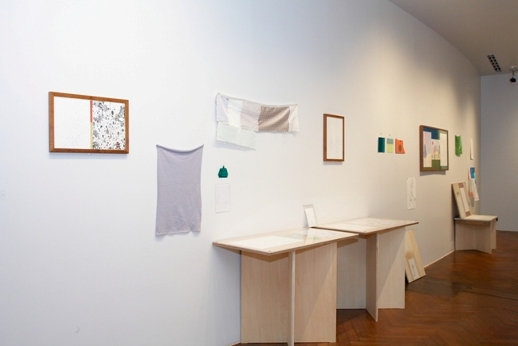The Micropop Imagination
What are the broad tendencies animating contemporary Japanese art? Are there any? For critic and curator Midori Matsui, the answer is undeniably “yes”, and some of the most vital works of the moment belong to what she calls “the world of ‘Micropop’.” Since the 1990s, Matsui argues, there have been three broad waves of Japanese artistic practice. Where the second wave would be associated with the Superflat art of Takashi Murakami, the third is described as the attitude of Micropop. On this account, Nara Yoshimoto is described as a pivotal figure.
For Matsui, Micropop is defined as a set of artistic practices that move in two directions: first, it involves the rearrangement of products, fragments of information, knowledge, or cultural signs to create new inventions. This act of rearrangement is said to be driven by “immediate demands in life” rather than ideology or social conventions.
Lyota Yagi’s ‘VINYL’ would seem to embody this first direction. In this simple but remarkable work, a phonograph record moulded in ice is played until it melts. Curiously, the looping noise of the melted disc, rather than the classical music, becomes most evocative for the listener, as the process of liquefaction prompts an intense curiosity, a desire to capture the decaying sound mass.

The second direction of Micropop is described as “the production, or recording, of a physical effect”, this being explained as a deterritorialization of the language of art. For Matsui, it is a question of creating new meanings which cannot be integrated in any context of human authority, invoking nonsense in place of the “order words” of full speech. Koki Tanaka’s ‘Cause is Effect’, Masanori Handa’s ‘Ocean of A (Ocean of Answer)’, and Taro Izumi’s ‘Llama’ might be considered the most exemplary of this direction.
“The Winter Garden” exhibition is organized around three themes: (1) the process of mental association triggered by everyday events; (2) the adolescent sensibility, including its subcultural influences such as manga and anime; and (3) the artists’ affinity with the modes by which plants and minerals survive, growing through the accretion of small elements. These themes are intended to form an organic whole, but they lead us to a significant difficulty with the theory of Micropop: how should we understand its unity?
 While Matsui has elected not to organize the galleries of the museum thematically, the sheer variety of works on display, combined with the breadth of practices and forms encompassed by the concept of Micropop, seem to dilute its explanatory power. Part of the difficulty is that Micropop is characterized more as an attitude than a set of practices. While described as being “independent of any major ideology or theory”, Micropop nevertheless appeals to the vitalist immediacy of “life”, with its attendant presuppositions concerning spontaneity and purity.
While Matsui has elected not to organize the galleries of the museum thematically, the sheer variety of works on display, combined with the breadth of practices and forms encompassed by the concept of Micropop, seem to dilute its explanatory power. Part of the difficulty is that Micropop is characterized more as an attitude than a set of practices. While described as being “independent of any major ideology or theory”, Micropop nevertheless appeals to the vitalist immediacy of “life”, with its attendant presuppositions concerning spontaneity and purity.
The theoretical support for this exhibition is set out in Matsui’s 2007 essay “Micropop — The Art of the Late Postmodern Age”, which draws upon the “minor literature” of Deleuze and Guattari, and De Certeau’s “tactics of the everyday”. Here, Deleuzian notions such as deterritorialization, immanence, and assemblages of enunciation, are freely invoked to explain contemporary Japanese art. To elucidate the works of the Micropop artists as forms of minor production, Matsui evokes the situation of children, immigrants, and consumers who live, as Deleuze puts it, “in a language that is not their own.”
Indeed, an adolescent or childish sensibility is evident in many works of the Micropop artists. Notable examples include Ryoko Aoki’s ‘The sun’, Mahomi Kunikata’s ‘The Useless Cave’, and Aya Tanako’s pen and watercolor drawings. Where Murakami’s Superflat ironically questioned the childish qualities of contemporary Japanese culture, attempting to understand its stakes, Matsui relaxes the need for critical interrogation, instead affirming the childish sensibility as a form of minor production. What seems lost here is the recognition, already circulating in Murakami’s work, that there is no longer anything “minor” or “radical” about childishness in the Japanese popular imaginary. Whatever we may think of it, kawaii has become and remains a dominant force.

Similarly, Matsui describes the Micropop artists as “cultural immigrants” within Japan, because of the “marginalized” position they occupy in relation to modern Western culture. While acknowledging the globalization of the art world and the sense in which “maginality is becoming universal”, Matsui’s description of these artists as marginalized subjects occupying a “non-institutional” position is rather curious. After all, we’re talking about artists who have been exhibited in Art Tower Mito, the Hara Museum, and now in an international touring exhibition funded by the Japan Foundation.
To create “a unique cultural identity” through an art whose practices have been formed “in response to the specific conditions of contemporary Japanese society”, and yet to transcend the banner and umbrella of “Japanese art” to create something with “universal appeal” — these, then, are some of the paradoxes, or contradictions, of Micropop.
M. Downing Roberts
M. Downing Roberts



